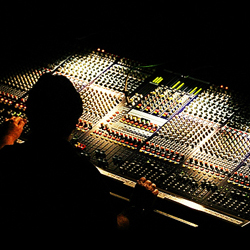Gain structure is one of those very important, yet highly underrated topics in audio. It’s not nearly as glamorous as EQ, plug-ins or parallel compression, but if your gain structure is whack, no amount of EQ, plug-ins or compression will fix it.
Here I’m going to focus primarily on input channel gain structure (overall system gain structure is another article entirely, but I’ll mention it briefly). The impetus for this article came from a simple question: Is it better to hit the preamps hard then turn down at the main output, or run the mains up around unity and dial back input gain to get the SPL you want out of the system?
As a general rule (there is an exception, which I’ll detail in a minute), I would argue the former is the correct (or at least better) method, and here’s why. Most preamps sound best when you hit them pretty hard (at least up to the point of clipping, which is too hard). By running preamps hard—and by hard I mean around -6 dB full-scale on a digital board, or within 6 dB of clipping on an analog board—you are maximizing signal-to-noise ratio.
And for some reason, they just sound better. Keep in mind, that’s a general rule, your mileage may vary. Now, it’s quite possible that if you dial the input gains up so that all of the preamps are running high, the overall system level will be too high.
That’s when you would lower your main level to compensate. This method will keep the signal to noise ratio high throughout the mixing chain, and will attenuate the signal at the last possible moment.
Before we get to setting up the gain structure, let me lay out my goals in for the process.
First, I want to maximize S/N ratio, and use up as many of the bits in the analog to digital (A/D) conversion process that I can. Keeping the input level high meets both goals.
Second, I like to mix with my faders around unity. Mixing with faders at unity is another key ingredient to good mixing. The fader resolution is highest right around unity, so it’s easy to make small adjustments.
If you try to mix with your faders at -20, a slight change in fader position might yield a 3-5 dB change rather than the 1-2 dB you actually desire.
Finally, I want to be sending a very solid signal out of the mixer to the processors for the same reasons (only in reverse) as the first point. That’s why proper system gain structure is important.
Next, how I would approach the process.





















